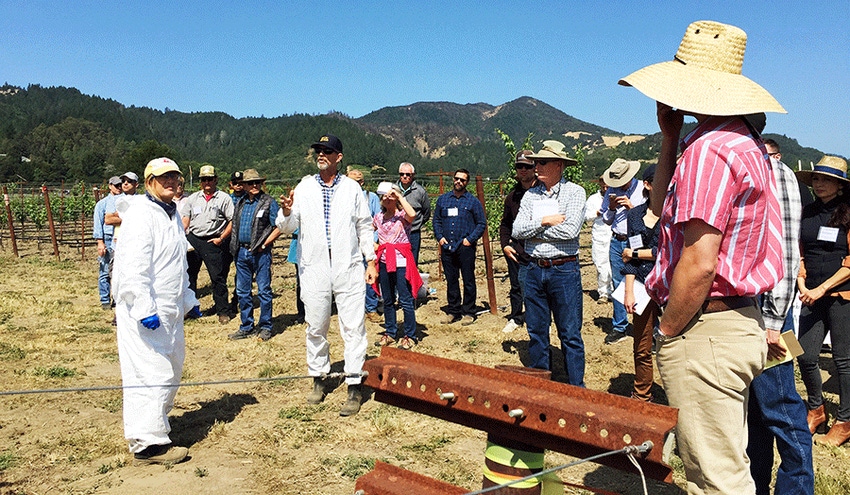
As most fumigants in California are being phased out, growers are having to find other ways to control weeds in young vineyards.
And while weeding by hand has been done, increased costs and a shrinking labor force have made this task impractical, says John Roncoroni, University of California Cooperative Extension Weed Science Farm Advisor in Napa County.
Mechanical cultivation is still too imprecise — it either leaves weeds close to young vines or causes damage by being too close, he explains in a news release.
So, what’s a grower to do? One option is to put covers on young vines, which will enable the use of many postemergence herbicides to fight weeds. But Roncoroni and other advisors urge growers to be careful. Getting herbicide on vines that aren’t protected by mature bark can damage or even kill the vine.
“Herbicide use on vines lass than three years old is a risky endeavor,” he says. “Follow all label requirements, paying special attention to soil and irrigation recommendations.”
Roncoroni was one of several farm advisors making presentations during a recent grape field day at the UC-Davis Oakville Station north of Napa. About 200 wine grape growers, vineyard consultants, and others attended to learn about the latest UCCE research.
A VARIETY OF RESOURCES
The UC Integrated Pest Management Program suggests a variety of measures to control weeds before planting vineyards, or while vineyards are young. Before planting, a cycle of cultivation — breaking up the ground — and irrigation is an especially effective weed control method, advisors say.
First, cultivate to remove existing weeds, then irrigate to encourage germination of new weeds, and cultivate again to kill the newly-emerged weed seedlings. Frequent cultivation lowers weed seed populations in the soil, thus reducing weed density.
At least two cycles of cultivation and irrigation are needed for a significant reduction in weed seedlings. However, this method is not effective for controlling established perennial weeds, the UC release cautions. In that case, it’s best to cultivate when the soil is very dry; this has proven effective against perennial grasses such as bermudagrass and johnsongrass.
Chemical controls can also be used before planting, and the advisors recommend using a pre-emergence herbicide in conjunction with a rotation crop. Growers need to make sure the residual period for the herbicide they’re using isn’t so long that it interferes with planting the vines. Postemergence herbicides generally have little or no soil residual, and are safer to use before planting.
In newly-planted vineyards, some growers prefer to manage weeds without herbicides for up to two years after planting to prevent damage to vines. They typically must hoe, cultivate, or use weed knives (set less than 2 in. deep around vines) several times during the spring and summer. Mechanical control of weeds must be done repeatedly when weeds are small, advisors say.
OTHER OPTIONS
Other, less labor-intensive methods are available, including the use of cover crops, mulches, and of course, herbicides. Planted cover crops can be used to reduce weed populations between vine rows, although growers will need to choose a cover crop that won’t compete with young vines.
Organic or synthetic mulches applied when the soil surface is free of weeds prevent the germination and growth of weed seedlings by blocking light and access to the soil surface. However, mulches may also provide a good habitat for gophers, voles, field mice, and snakes, and they don’t control perennial weed growth unless all light can be completely excluded.
When resorting to chemicals after planting, it’s best to apply a preemergence herbicide as a band down the vine row or in an area 3 feet to 6 feet around each vine. Herbicides can also be applied to weeds after they emerge. But the advisors caution that glyphosate should only be used around mature vines that have brown bark, as the synthetic herbicide can cause substantial crop injury.
For detailed instructions on weed management in vineyards, visit https://bit.ly/2MSuphc
About the Author(s)
You May Also Like






